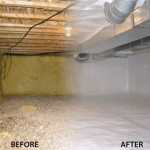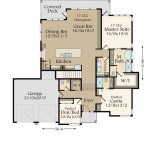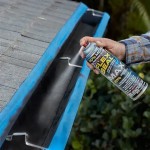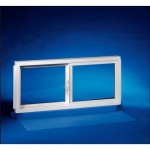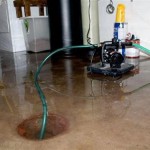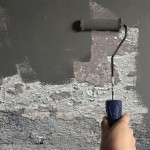Ideal Basement Humidity: A Guide for Summer and Winter
Maintaining appropriate humidity levels in a basement is crucial for preventing various structural and health-related issues. Basements, being below ground, are naturally prone to higher humidity due to their cooler temperatures and proximity to groundwater. The ideal humidity range fluctuates somewhat between summer and winter due to the changing external climate. Understanding these variations and the strategies for maintaining them is critical for preserving a comfortable and healthy living environment.
Relative humidity (RH) refers to the amount of moisture present in the air compared to the maximum amount of moisture the air can hold at a given temperature. It is expressed as a percentage. High humidity promotes mold growth, wood rot, and pest infestations, while excessively low humidity can cause dry skin, respiratory problems and damage to wooden structures.
Therefore, monitoring and controlling basement humidity is not merely about comfort, but it is also fundamental to preventing costly repairs and ensuring good indoor air quality for the entire home.
Ideal Humidity Range for Basements
The generally accepted ideal relative humidity range for a basement is between 30% to 60%. However, within this broader range, a more specific target is often recommended: 40% to 50%. This narrower window represents a sweet spot, minimizing the potential for problems associated with both high and low humidity.
During the summer months, humidity levels naturally tend to increase. Warmer air can hold more moisture. This increases the likelihood of exceeding the 60% threshold in basements. In winter, cold air holds less moisture leading to lower humidity levels that can dip below 30%. Therefore, active monitoring and adjustments based on seasonal changes are necessary.
It is important to note that these are general guidelines. The precise optimal humidity level for a specific basement may vary depending on factors such as the basement's construction, ventilation, geographical location, and the activities that take place within the space. For example, a basement used as a laundry room or containing a bathroom will likely experience higher humidity levels than one primarily used for storage.
Regular use of a dehumidifier in the summer and potential humidification in the winter, alongside proper ventilation, will contribute significantly to maintaining the target humidity range.
The Impact of High Basement Humidity
When basement humidity exceeds 60%, a range of problems can emerge, affecting both the building structure and the health of its occupants. Mold growth is one of the most significant concerns. Mold thrives in damp, dark environments, and basements provide the perfect breeding ground when high humidity is present. Mold not only damages building materials, such as drywall, wood, and carpets, but it can also release spores into the air. These spores can trigger allergic reactions, asthma attacks, and other respiratory problems, especially for individuals with pre-existing sensitivities.
High humidity can also lead to wood rot, particularly in structural elements like floor joists and support beams. Wood rot weakens the wood, compromising the structural integrity of the building. The repair or replacement of rotted wood can be a costly and disruptive process.
Pests such as dust mites, silverfish, and centipedes are attracted to humid environments. These pests can damage belongings stored in the basement, contaminate food, and trigger allergies in sensitive individuals. High humidity can also cause musty odors, creating an unpleasant and unhealthy living environment. These odors are often the result of mold and mildew growth, further reinforcing the cycle of poor air quality.
Furthermore, condensation can form on cool surfaces in the basement, such as concrete walls and floors, leading to water damage and promoting mold growth. Over time, this can lead to the deterioration of building materials, requiring extensive and expensive repairs.
Addressing high basement humidity promptly is imperative to protect both the building structure and the health of its occupants. Dehumidifiers, proper ventilation, and addressing sources of moisture intrusion are all crucial steps in mitigating the negative effects of excessive humidity.
The Consequences of Low Basement Humidity
While high humidity presents numerous problems, excessively low humidity in a basement, typically below 30%, can also lead to undesirable consequences. In winter, when cold air infiltrates the basement, it can dry out the air significantly. This dry air can then permeate throughout the entire house, causing a range of discomforts.
Dry air can irritate the respiratory system, leading to dry nasal passages, sore throats, and coughs. It can also exacerbate existing respiratory conditions, such as asthma and allergies. Skin can become dry, itchy, and cracked, leading to discomfort and potential skin problems.
Low humidity can also damage wooden structures and furniture. Wood expands and contracts with changes in humidity levels. When the air is too dry, wood can shrink, leading to cracks, warping, and loose joints in furniture, flooring, and structural elements. Musical instruments, which are particularly sensitive to humidity fluctuations, can also be damaged by low humidity.
Static electricity becomes more prevalent in dry environments. Static shocks can be annoying and even damaging to electronic equipment. Moreover, low humidity can make it more difficult to control dust levels in the home, as dry air allows dust particles to remain airborne for longer periods.
To counteract the negative effects of low humidity in a basement, humidification might be necessary during the winter months. This can be achieved through the use of portable humidifiers or, in some cases, a whole-house humidification system. Monitoring humidity levels with a hygrometer is essential to ensure that the air does not become too dry.
Monitoring and Controlling Basement Humidity
Effective management of basement humidity requires consistent monitoring and the implementation of appropriate control measures. The first step is to accurately measure the relative humidity levels in the basement using a hygrometer. Hygrometers are relatively inexpensive and readily available at most hardware stores. Digital hygrometers offer precise readings and often display both temperature and humidity levels.
Regularly check the hygrometer readings, ideally on a daily basis, to track any fluctuations in humidity levels. Pay particular attention to changes in humidity following periods of heavy rain or during seasonal transitions. Keeping a log of humidity readings can help identify patterns and potential problem areas.
If humidity levels exceed the ideal range of 40% to 50%, take immediate action to reduce moisture levels. The most common solution is to use a dehumidifier. Select a dehumidifier with sufficient capacity for the size of the basement and the typical humidity levels. Empty the dehumidifier's water reservoir regularly or, if possible, connect it to a drain for continuous operation.
Ensure proper ventilation in the basement. Opening windows, when weather permits, can help circulate air and reduce humidity. However, be mindful of outdoor humidity levels, as opening windows on a humid day can actually increase basement humidity. Exhaust fans can also be used to remove moisture from the air, particularly in areas with high humidity, such as laundry rooms or bathrooms.
Address any sources of moisture intrusion. Check for leaks in pipes, walls, and the foundation. Seal any cracks or openings that could allow water to enter the basement. Ensure that gutters and downspouts are functioning properly to direct water away from the foundation. Proper grading around the foundation can also help prevent water from pooling near the basement walls.
Consider using vapor barriers to prevent moisture from seeping through the walls and floors. Vapor barriers are typically made of plastic sheeting and are applied to the interior surfaces of the basement walls and floors. Insulating basement walls can also help reduce condensation and improve overall humidity control.
During the winter months, if humidity levels drop below 30%, consider using a humidifier to add moisture to the air. Portable humidifiers can be placed in strategic locations throughout the basement. Ensure that the humidifier is properly maintained and cleaned to prevent the growth of mold and bacteria.
By consistently monitoring humidity levels and implementing appropriate control measures, it is possible to maintain a healthy and comfortable basement environment year-round. Professional assessments by HVAC specialists and building inspectors can also provide valuable insights and recommendations for optimizing basement humidity control.

What Is The Ideal Basement Humidity Level Epp Foundation Repair

Managing Ideal Indoor Humidity Levels All Year Round

Bad Advice About Indoor Humidity In Cold Weather Energy Vanguard

A Guide To Controlling Nc Home Humidity Newcomb And Company

Relative Humidity Chart For Ideal In The House

Relative Humidity Chart For Ideal In The House

Basement Humidity Levels Variations Impacts And Controling

Why Is Year Round Humidity Important

What S The Ideal Crawl Space Humidity Level

Basement Humidity Levels Variations Impacts And Controling

